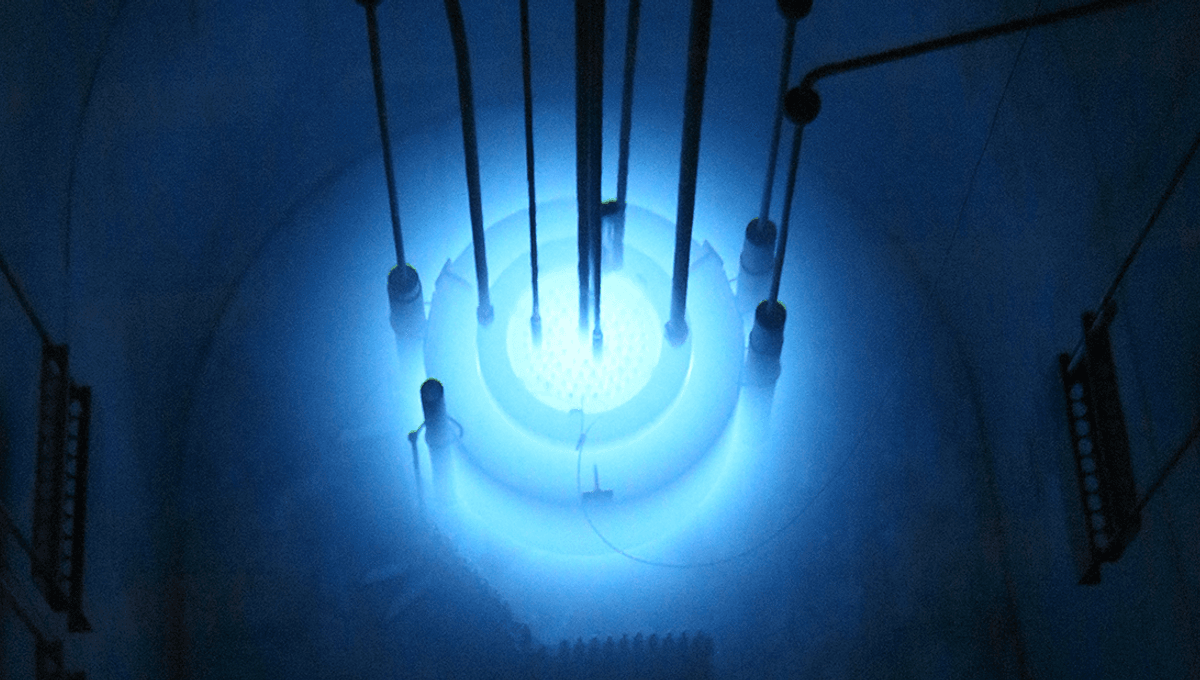
When thinking of a place to put a telescope, the ocean bed is probably the last place on your mind, following the age-old “sky = up” principle. But it really depends what you’re looking for.
The partially built Cubic Kilometre Neutrino Telescope (KM3NeT), is looking for high energy neutrinos, in an attempt to study them and to find what astrophysical source sent them flying across the cosmos. To do so it uses the ocean as a sort of detector, and exploits an effect that happens when subatomic particles travel through a medium faster than the speed of light in that medium.
The speed of light in a vacuum is the absolute speed limit of the universe. Nothing will go faster than 300,000 kilometers per second (186,000 miles per second), according to Einstein’s work, as it would require an infinite amount of energy to do so. However, that doesn’t mean that light can’t be beaten in terms of speed under the right set of circumstances, and when that happens something strange called the “Cherenkov effect” can take place. In water, for example, light is slowed down to a sluggish 200,000 kilometers per second (124,274 miles per second). Ok, we will grudgingly admit that that’s still pretty fast, and any particle wishing to break that speed would require 175 kiloelectron volts of energy behind it.
This does sometimes happen. In 1934, Soviet physicist Pavel Cherenkov witnessed what happens when it does, after bombarding water with radiation. A blue light, now known as Cherenkov light or Cherenkov radiation, was emitted from the water.
He and colleagues Il´ja Mikhailovich Frank and Igor Yevgenyevich Tamm figured out what was causing the strange glow: charged subatomic particles moving faster than the speed of light (in water) producing an effect similar to a sonic boom, which occurs when (for example) a plane travels faster than the speed of sound. For their work, they were awarded the 1958 Nobel Prize in Physics.
It is Cherenkov light in the ocean that KM3NeT is aiming to detect, produced by neutrino interactions within the ocean. The Astroparticle Research with Cosmics in the Abyss (ARCA) observatory forms the largest part of KM3NeT. The detectors are attached to long strings, with the bottom detectors placed around 3,500 meters (11,482 feet) under the sea. More detectors helps them filter out ocean “noise”, such as the decay of potassium 40.
Excitingly, ARCA appears to have detected what Francis Halzen, a physicist at the University of Wisconsin-Madison, told Nature News was “a fantastic event”. The bright event seen by ARCA has so far only been teased with neutrino physicist João Coelho reportedly telling the Neutrino 2024 conference in Milan, Italy, but revealing little other than it “really stands out, very far away from anything else.”
For now, researchers are staying tight-lipped about the direction and time of the detection, in case other teams could use this information to track down the cosmological source, Nature News reports. We will have to wait and learn more of the exciting detection.
[H/T: Popular Mechanics]
Source Link: Possibly The Most Energetic Neutrino Ever Detected In The Mediterranean Sea